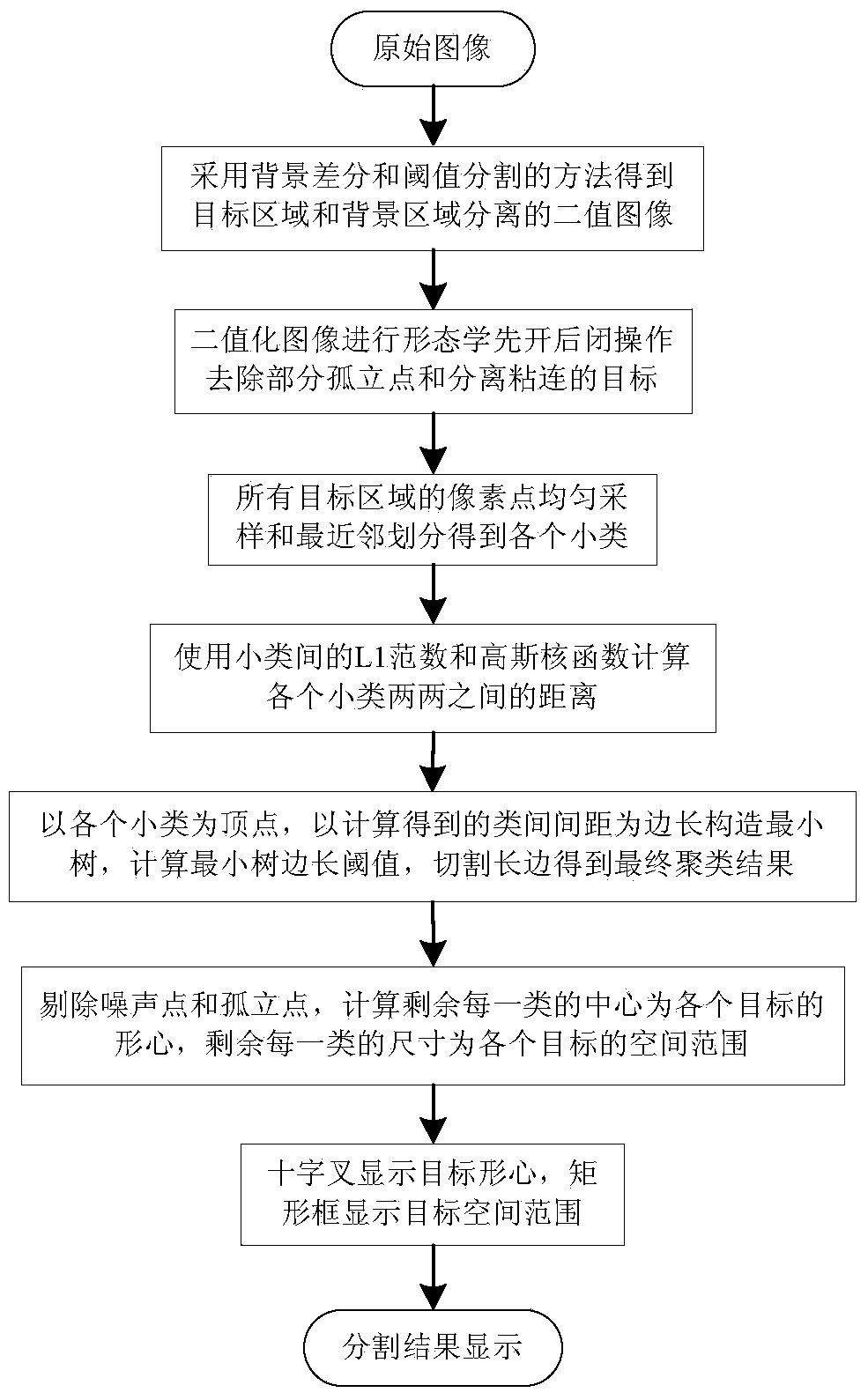Infrared multi-target segmentation method based on minimum tree clustering
A minimum tree and multi-objective technology, applied in image analysis, image enhancement, instrumentation, etc., can solve problems such as noise point interference, non-spherical cluster identification, initial value selection, etc.
- Summary
- Abstract
- Description
- Claims
- Application Information
AI Technical Summary
Problems solved by technology
Method used
Image
Examples
Embodiment Construction
[0043] The present invention will be further described below in conjunction with the accompanying drawings and embodiments, and its specific implementation manner will be introduced.
[0044] The specific flowchart of the infrared multi-target segmentation method of the present invention is as figure 1 As shown, the specific implementation steps include the following steps:
[0045] Step 1: Use the background subtraction method and morphological operations to process the image to be detected to obtain a binary image in which the target area and the background area are separated.
[0046] Step (1a): Collect a set of sequence images containing moving objects, and take the median value in the time dimension to generate a background image.
[0047] The background subtraction method requires a background image that does not contain any target as a reference image, and the present invention uses a set of sequence images to construct the background image. First, construct a set of ...
PUM
 Login to View More
Login to View More Abstract
Description
Claims
Application Information
 Login to View More
Login to View More - R&D
- Intellectual Property
- Life Sciences
- Materials
- Tech Scout
- Unparalleled Data Quality
- Higher Quality Content
- 60% Fewer Hallucinations
Browse by: Latest US Patents, China's latest patents, Technical Efficacy Thesaurus, Application Domain, Technology Topic, Popular Technical Reports.
© 2025 PatSnap. All rights reserved.Legal|Privacy policy|Modern Slavery Act Transparency Statement|Sitemap|About US| Contact US: help@patsnap.com



